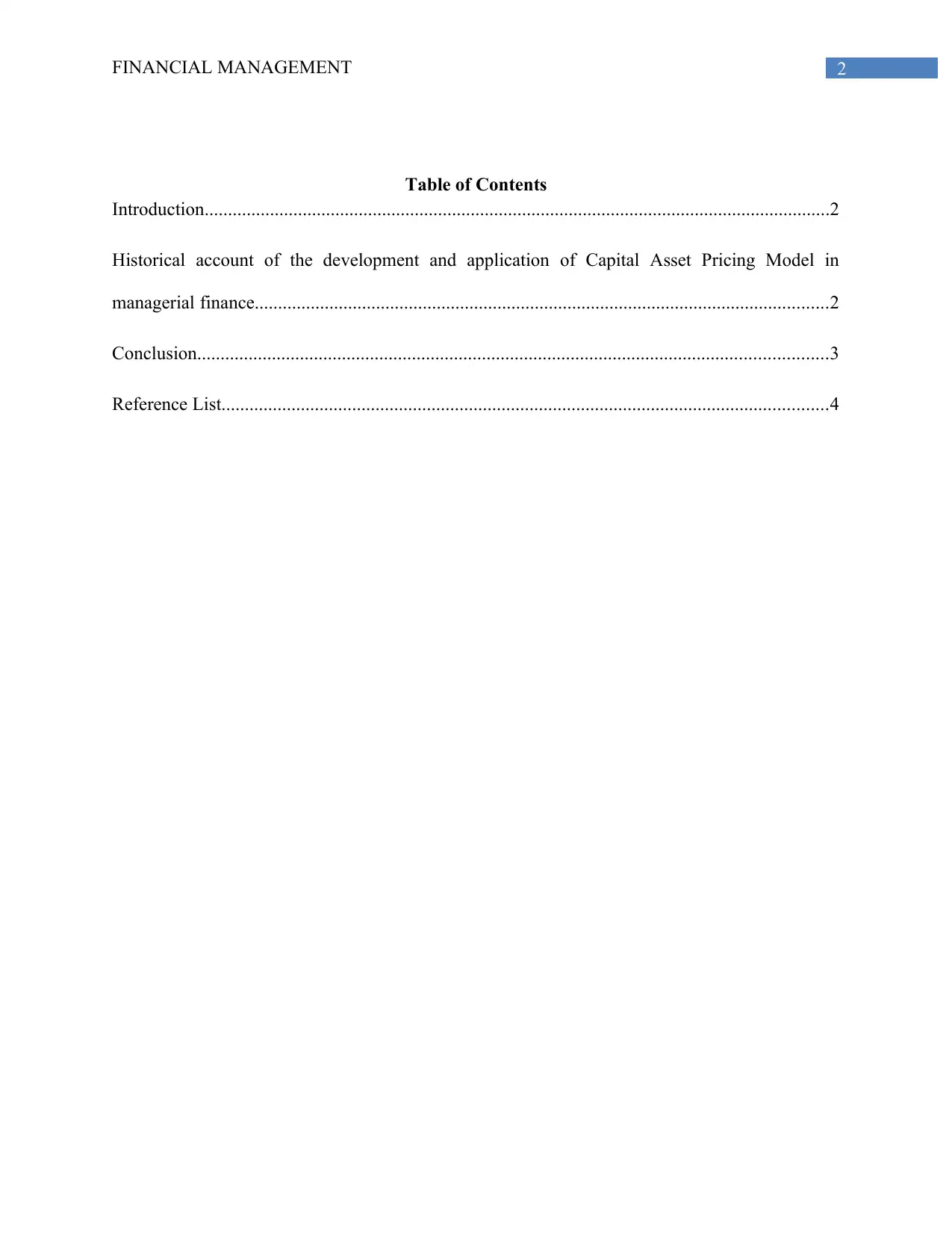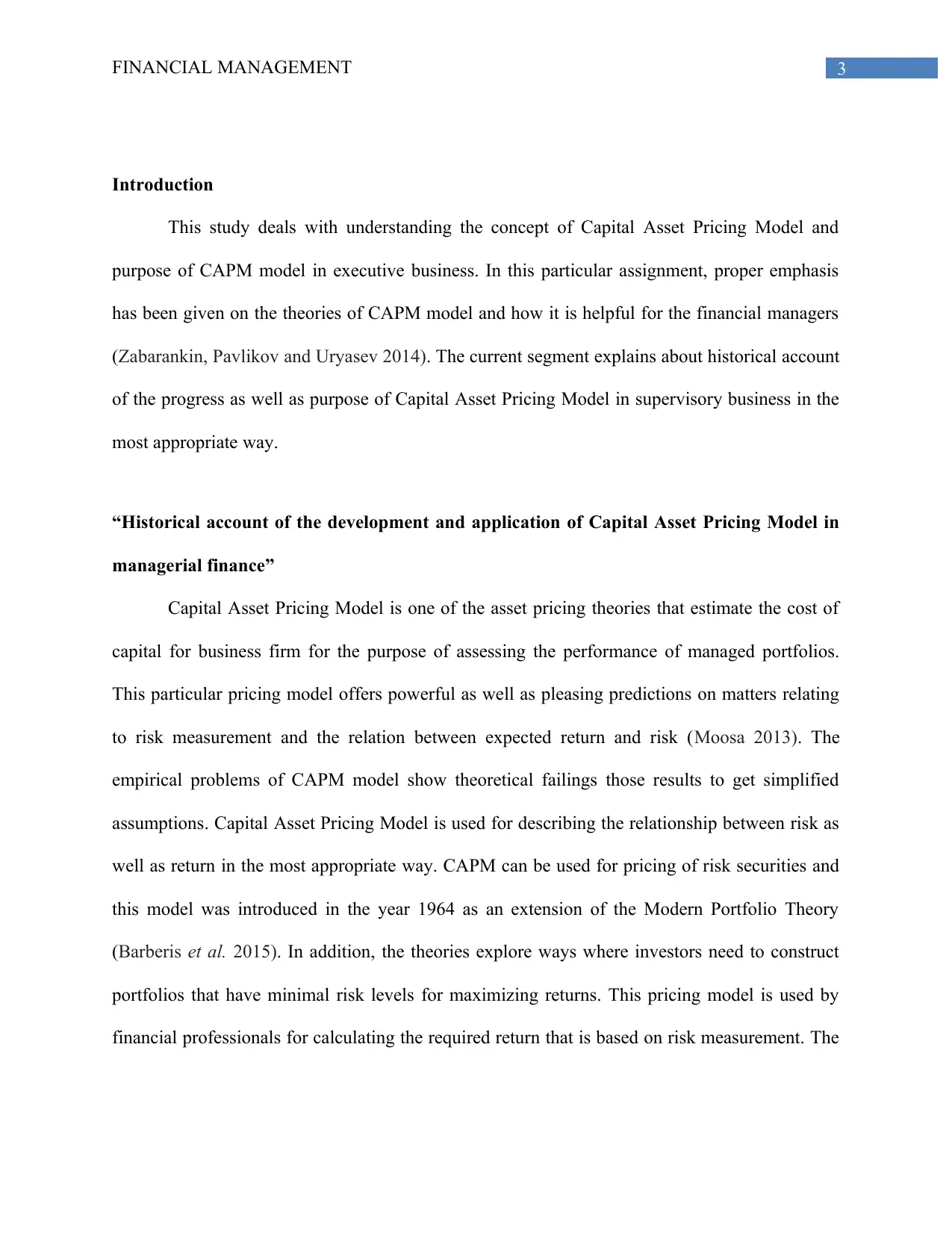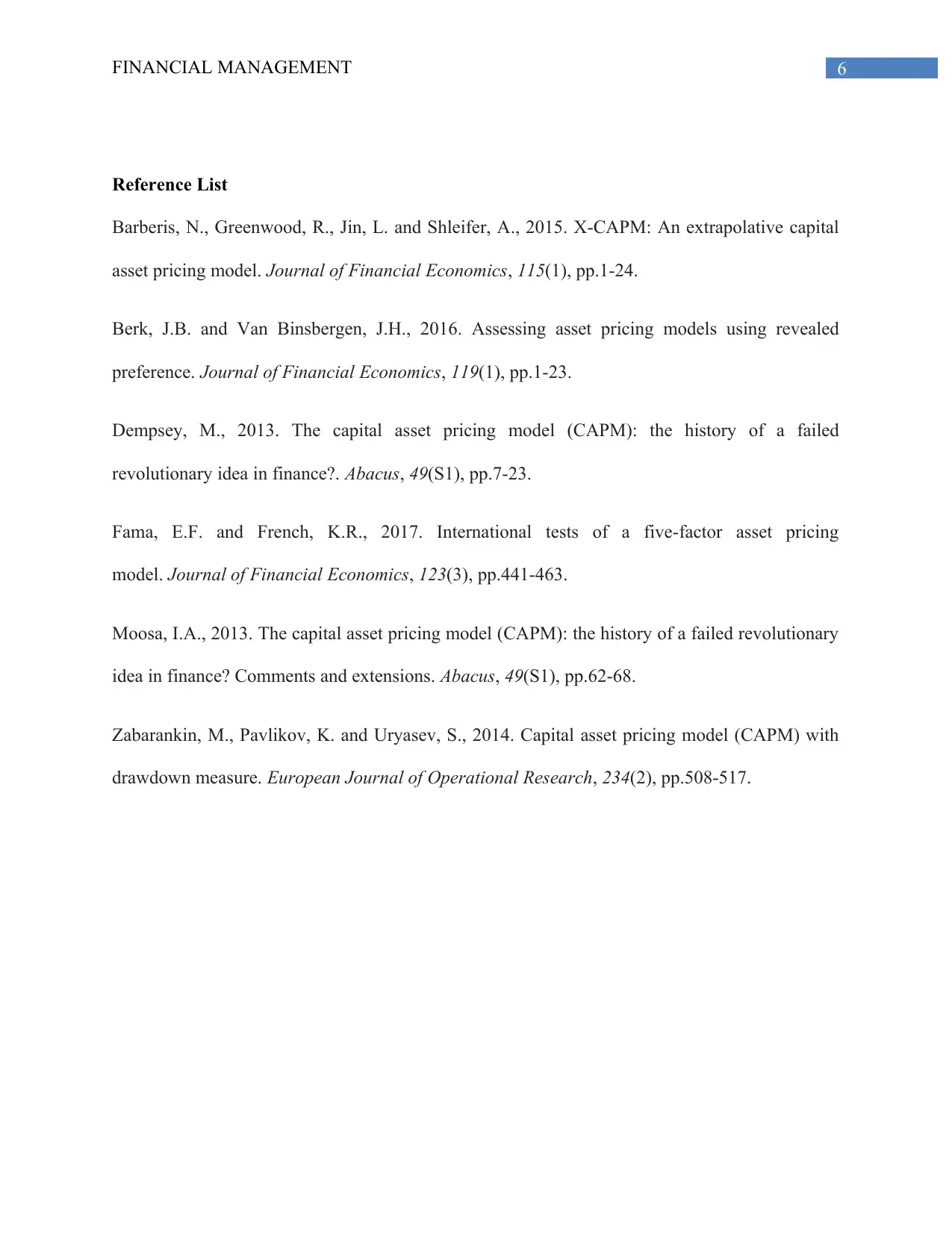University Finance Report: Capital Asset Pricing Model Analysis
VerifiedAdded on 2020/04/21
|6
|862
|42
Report
AI Summary
This report focuses on the Capital Asset Pricing Model (CAPM) and its application in financial management. It begins with an introduction to CAPM and its relevance in assessing the cost of capital and evaluating managed portfolios. The report then delves into the historical development of CAPM, highlighting its role in risk measurement and the relationship between expected return and risk. It discusses the model's use in pricing risk securities, its reliance on the beta coefficient, and its importance in calculating the cost of equity capital for business enterprises. The report also addresses the limitations of CAPM, such as its simplified assumptions. The conclusion emphasizes the value of CAPM as a tool for financial managers, suggesting that it can be used alongside other techniques to develop realistic cost of equity calculations. The report references several academic papers that support the analysis, and concludes that a good understanding of the factors that govern the use of the CAPM model is essential for financial managers.
1 out of 6












![[object Object]](/_next/static/media/star-bottom.7253800d.svg)